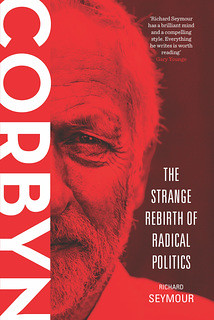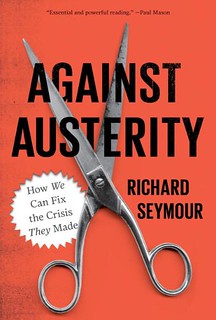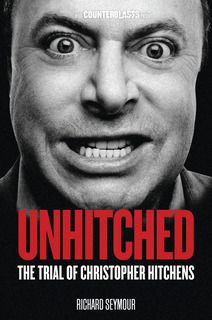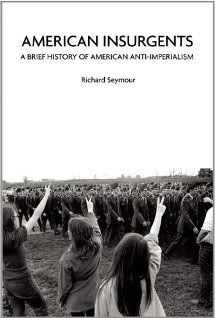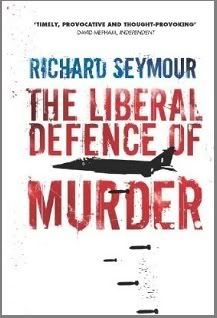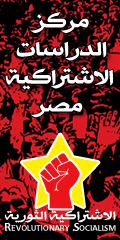Thursday, May 21, 2009
The scorched earth of Tamil Eelam posted by Richard Seymour
 The leaders of the LTTE have immolated themselves, and it is reported that chief Prabhakaran is dead. The Sri Lankan army has rounded up the last fighters. Thousands have been killed by the Sri Lankan army, and hundreds of thousands of civilians are trapped in internment camps, where they report being raped, abused, and starved by Sri Lankan soldiers. The Tamil Eelam state that LTTE fighters had been building in areas where they controlled has been demolished. A struggle that has lasted for over a generation now looks like it has ended in a decisive victory for the Sri Lankan state against the Tamil separatists. But what manner of struggle is it that is now apparently subsiding into a bloody twilight, and what will replace it? It would be difficult for anyone relying on the mainstream news to tell. In the UK, some awareness has been raised thanks to the efforts of networks of Tamil activists. But these activists have had to operate under scrutiny, because the LTTE was banned in the UK in 2001, and anyone suspected of being a member could end up being arrested.
The leaders of the LTTE have immolated themselves, and it is reported that chief Prabhakaran is dead. The Sri Lankan army has rounded up the last fighters. Thousands have been killed by the Sri Lankan army, and hundreds of thousands of civilians are trapped in internment camps, where they report being raped, abused, and starved by Sri Lankan soldiers. The Tamil Eelam state that LTTE fighters had been building in areas where they controlled has been demolished. A struggle that has lasted for over a generation now looks like it has ended in a decisive victory for the Sri Lankan state against the Tamil separatists. But what manner of struggle is it that is now apparently subsiding into a bloody twilight, and what will replace it? It would be difficult for anyone relying on the mainstream news to tell. In the UK, some awareness has been raised thanks to the efforts of networks of Tamil activists. But these activists have had to operate under scrutiny, because the LTTE was banned in the UK in 2001, and anyone suspected of being a member could end up being arrested.The main way in which we have come to understand the LTTE and the Tamil secession struggle has been through the prism of counterinsurgency, terrorism, the strategic logic of suicide attacks, funding networks and - so it has darkly been hinted - possible ties with 'Al Qaeda'. History and context are only raised on the rare occasion that someone in the field of 'counterterrorism' thinks it matters. Otherwise we are advised that it is simply an ethnic conflict, between the Sinhalese majority and the Tamil minority. The Sri Lankan state, which blames the entire conflict on the LTTE and purports to be 'liberating' Tamils from their rule, is apparently convinced that a military demolition of its opponents means that they have secured a long term victory. In fact, however, their turn to this brutal military solution is a result of failure. It is the inability of Sri Lanka's rulers to accomodate even partially the interests of the Tamil minority within the terms of its sovereignty, as was made clear by the failure of peace accords earlier this decade, that has led to this state of affairs. This is the hallmark of a weak and fractious ruling class, not a strong and confident one. The LTTE may be broken, but that doesn't mean that the people of the Tamil north will simply give way.
As usual, there is a colonial background here, inasmuch as the ethnic divisions are rooted in the practises of rule and exploitation by British colonial powers in what was Ceylon. British imperialism was hardly loyal to one ethnicity over another - its 'race management' strategy changed over time. On the one hand, the British imported indentured workers from Tamil Nadu in southern India to help extract those rich rubber, tea, cinnamon, indigo and sugar resources. These were subject to tough labour legislation and restrictions forbidding them from leaving the plantation. On the other hand, modest advantages were conferred on some middle class layers of the Tamil minority who had already lived there for hundreds of years, as well as on some upper class Sinhalese and particularly on Burghers (descendants of European colonists). Moreover, British ethnology absurdly maintained that the Sinhalese and Tamils were distinct 'races': the former were 'Aryan', while the latter were 'Dravidian' - this on the basis of a divergence between languages spoken in central and southern India, and the Sanskrit-derived languages of the north.
This was an important aspect of imperial power-knowledge, as the British based their administrative units on such ethnology, while the owners of capital used anti-Tamil feeling to break strikes and disorganise workers. Such 'divide and rule' strategies were reflected in the censuses which, after 1911, placed indentured Tamil plantation workers in a separate category as 'Indian Tamils'. Legislation pushed through by Governor Manning in 1924 was used to undermine the unity of the emerging Lankan nationalist movement by introducing more communal representation systems into the Legislative Council. On this occasion, the British chose to under-represent the Sinhalese majority. Later, the Fabian-led Donoughmore Commission would reject communal representation and propose a 'universal franchise' under British rule. The Tamil nationalists had to decide whether to oppose it in the interests of conserving a communal position, or whether to oppose it because it didn't concede self-government, and ultimately chose the latter, but you begin to see how such divisions had become a terrible disabling factor for the independence movement.
That brings us to another crucial background, which is the rise and eclipse of the Sri Lankan revolutionary Left in the 20th Century, and its ultimate inability to overcome the divisions inherited from the colonial period. For, despite the mass communist and trade union movements that fought for independence, when independence was finally achieved in 1948, it was on terms that maintained powerful British interests in Sri Lanka, with large naval and air facilities based there to help the empire defends its holdings in Malaya. Moreover, it was in a way that deepened the extant ethnic divisions. Tamil plantation workers were excluded from the franchise by the new ruling party, the UNFP, and thus the Tamil minority was stigmatised as being in some sense not properly Sri Lankan. A split from the UNFP produced the Sri Lankan Freedom Party (SLFP) which was even more hostile to the Tamil minority. It claimed that Sri Lanka had a Buddhist identity, despite the fact that a sizeable minority were Hindu. Peaceful protesters, however, were attacked and killed, while the government continued to discriminate against the Tamil minority. They were the target of riots, pogroms, and state repression, and in opposition to this there developed a guerilla movements such as the Tamil New Tigers.
Sri Lanka was unique in developing a mass communist movement based on Trotskyism. The role of the Lanka Sama Samaja Party (LSSP), founded in 1935, was quite extraordinary. Not only was it not a communally based party, but it made a surprising and concrete connection with the British working class with the involvement of its prominent agitator Mark Bracegirdle (the spectacle of a white man rousing Sri Lankan labourers with his speeches against the planters was something that the British administrators absolutely detested). It was instrumental in building the union movement, was one of the few forces that continued to fight the British during World War II, and became the main opposition party after the war. Throughout the 1950s and 1960s, the party made great strides while resisting the Sinhala nationalism of the ruling SLFP. Moreover, the most powerful trade union movements at that time were aligned to the LSSP. But the party made the mistake of forming a coalition government with the SLFP, first in 1964, then again in 1970. It became part of a ruling administration that actually continued to discriminate against the Tamil minority. And it was also a suicidal move, since the front split in 1975, the LSSP representatives were expelled, and the party later lost all its MPs. It has since been involved in several coalitions with the SFLP, and has never recovered its former standing. But to be absolutely clear about this, the LSSP's early opposition to communalism was, as far as I can discover, most unusual. The majority of left-wing groups - and bear in mind that even the SFLP is nominally a socialist party - had long supported Sinhalese nationalism.
And that brings us to the Liberation Tigers of Tamil Eelam (LTTE), which was formed in 1976 to replace the Tamil New Tigers, and the Tamil independence struggle which was launched in 1983. The rise of the Tigers did reflect the left's historic failure, even if the LTTE adopted nominally marxist politics. It reflected the fact that a non-communal left had been unable to hegemonise the working class, that even explicit revolutionaries and Guevarists had been party to oppression of the Tamils. It also reflected an enormous increase in state repression, with increasing reliance on mass arrests and torture. The tactics of the LTTE in response have been the focus of a lot of study of late. Kidnappings, bombings and, later on, suicide attacks. These were the tactics of a national struggle, one that necessarily didn't recognise any allies among the Sinhala majority.
But the dirty war was overwhelmingly fought by the Sri Lankan army. For example, when Tamil fighters attacked an army convoy in Jaffna in July 1983, the army retaliated by attacking and killing sixty civilians in the city - university lecturers, housewives, engineers, students, all shot dead in their homes. The Colombo-based press, however, focused overwhelmingly on the dead soldiers (does this sound familiar?) and whipped up an atmosphere of hostility to the Tamils. The government then proceeded with an extraordinarily vicious series of pogroms, which began with the burning of huts in Trincomalee and the expulsion of their residents. In Colombo, Sinhalese nationalists organised and attacked Tamil homes, shops, and vehicles, murdering dozens in one evening. Tamil prisoners were systematically murdered in cold blood. For weeks and weeks, similar episodes raged. The streets, empty apart from armed men on the prowl and their victims, were scenes of devastation. One town, the Tamil town of Kandapola, was utterly destroyed. The government began to round Tamils up, ostensibly to protect, and drove them into wretched 'refugee camps'. 90,000 refugees were created in Colombo alone by the first week of August. That wave of violence is known as 'Black July'. It lent awful credence to the argument that the Tamils didn't have Sinhalese allies they could look to. It sparked the war that thundered for more than twenty five years.
I have emphasised that the LTTE struggle can't be reduced to its tactics, but its tactics did flow from its nationalist premises. That is why it chose to pursue a guerilla struggle when it didn't have mass support, and why it eventually sought the help of the Indian government who at first armed the Tigers, then negotiated a peace deal, then sent in a 'peacekeeping' force which ended up attempting to disarm them - thus producing another horrendous bout of conflict, this time with the Indian army who were forced to withdraw in 1990. The Tigers, to make up for their lack of firepower, pioneered suicide bombings and invented the suicide belt. They repeatedly targeted civilians, seeing them as complicit in their oppression. They killed Muslims where they didn't simply extort them for funding. They also engaged in the recruitment of child soldiers. Such callousness was mandated by the argument that the Tamils could never live at peace within Sri Lanka, that they would always be oppressed, and could never look to Sinhalese or anyone else to defend them - but could in Tamil Eelam, they would be free.
Even despite their relative weakness, the Tigers could be a devastatingly effective force, and were very efficient at raising funds through the diaspora. It wasn't beyond them to rout the Sri Lankan army, such as when they took the strategically essential Elephant Pass from the Sri Lankan army in 2000, and then destroyed half the Air Lanka fleet at Colombo airport when the army tried to take it back. They successfully assassinated the Indian Prime Minister, Rajiv Gandhi, partially as a response to India's role in northern Sri Lanka. At the same time, because of their inherent military disadvantage, they repeatedly engaged in diplomatic attempts to end the war. Throughout the conflict, there were five separate peace agreements, and several unilateral ceasefires on the part of the LTTE. The Sri Lankan state consistently refused to reciprocate on unilateral ceasefires and generally didn't hold up its end of the bargain in negotiated ceasefires. This isn't to say that the Tigers were angelic in their conduct of negotiations. One doesn't expect that. And nor does it mean that peace held no advantages for the Sri Lankan ruling class. To secure the territory would certainly open new avenues for growth and allow the further penetration of the economic liberalisation programme throughout the country. The question was always whether they preferred a peace with autonomy for the Tamil north or a peace achieved by a comprehensive defeat for the Tigers. Given the choice, and given the prevailing constituencies, they tended to choose the latter.
The last ceasefire started in 2002 and ended in 2004, and it is instructive to see just how it ended. The Sri Lankan army had, since the fall of the Elephant Pass, been actively seeking arms and counterinsurgency training from any source it could. It forged a new alliance with Israel to this end, and raised its defence budget to $1bn. The army engaged in an energetic recruitment drive. The LTTE, evidently not trusting the government and unwilling to reduce its fighting capacity until a political settlement had been reached, sought to mirror the army's build up. The ceasefire was looking fairly shaky by late 2004. A new coalition had come to power involving leading Sinhalese nationalist forces, the SFLP and JVP, with the support of he LSSP. They did not support the federalist idea that both the LTTE and the previous government had been negotiating around. They declared that the negotiations process was tainted at source, and that the ceasefire no longer held. And then the tsunami struck. The army took the advantage of the devastation to restore its position in the Tamil north, just as the Indonesian army was doing in Aceh. It deliberately withheld aid from Tamil areas and started to penetrate refugee camp. Soon after, the war resumed. It resumed with the Sri Lankan army in a far more commanding position than it had been in before. And it ended with the military devastating its opponents and slaughtering civilians as it had always done. It ended the dream of Tamil Eelam.
But what would Tamil Eelam have looked like? The structures of an incipient state were being constructed in the Tiger-run territories, partly out of sheer necessity. Unwilling to be ruled under the Prevention of Terrorism Act, they had to elaborate their own legal system and civil codes. The structures they developed were highly effective. There is a rather simplistic argument over whether the peace and low crime rates that obtained in the Tiger controlled areas were the result of authoritarian policing or social justice. The state structures were indeed highly authoritarian in some ways, which is perhaps unsurprising in the context of war. On the other hand, they were based on welfare and development, codifying womens' rights, criminalised all forms of caste discrimination, and so on. The welfare functions were paid for by a form of taxation that in other circumstances would just be called 'rent'. The Tigers also pioneered the creation of an NGO, the Tamils Rehabilitation Organisation which, for example organised tsunami relief aid. As brutal as the Tigers could be in their tactics, they evidently tried to prefigure a more socially just society. And this made sense as a political strategy, since their ability to wield effective force had to be embedded in their political hegemony. Nonetheless, it's important to see the limits of this. The LTTE had traditionally been in favour of a heavily state-run developmentalist economy, but in negotiations in 2004 made it clear that while the LTTE had to urgently mount a humanitarian and development programme, it favoured a long-term strategy based on "an open market economy", and it voiced no opposition to the state's liberalisation measures. The glorious Tamil Eelam would have been a neoliberal state, perhaps no more than an autonomous zone within a federal structure, implementing the same IMF-driven policies that have been pushed from Colombo for some years.
That this, ultimately, is what so many young men and women were prepared to kill an die for, is not the least of the Tamils' tragedies.
ps: see Socialist Worker's archive of articles on Sri Lanka for some useful background.
Labels: 'terrorism', colonialism, ethnic conflict, genocide, ltte, sri lanka, tamil tigers


